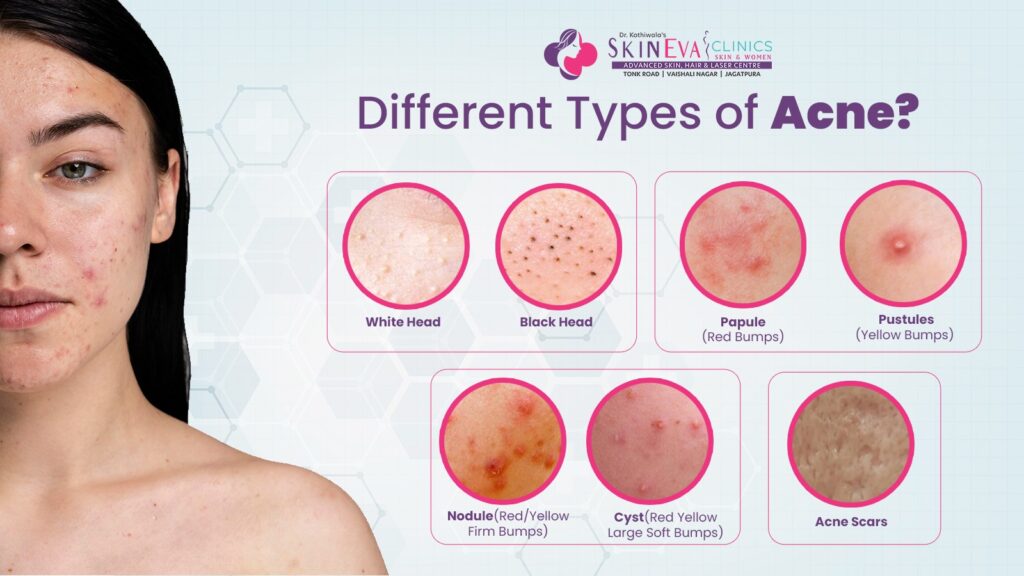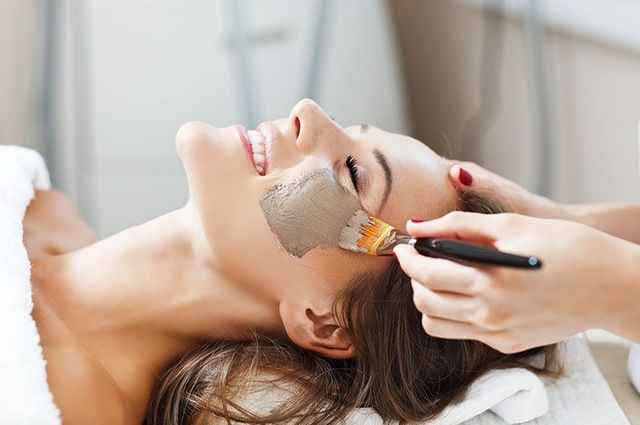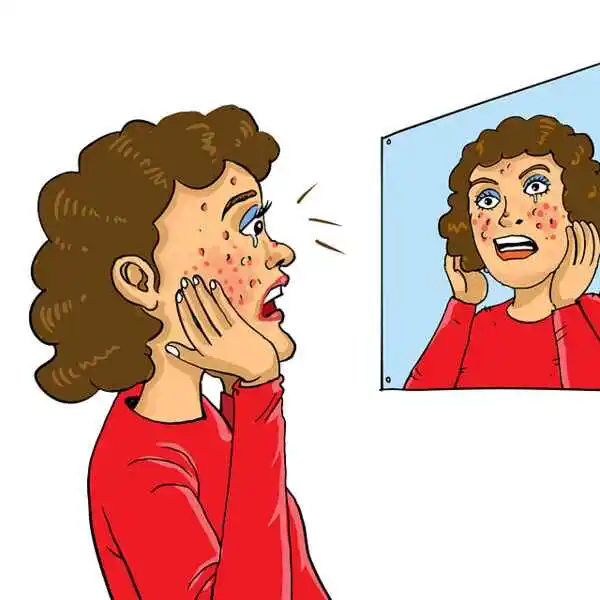Acne, a prevalent skin condition, affects millions worldwide, surfacing as pimples, blackheads, and nodules on various body parts, notably the face, chest, and back. This dermatological challenge, often triggered by hormonal fluctuations, excess oil production, and clogged follicles, extends beyond physical discomfort to impacting one’s self-confidence and mood. Recognizing the underlying causes of acne, including genetic factors and environmental contributors like greasy substances and certain medications, is the first step in managing this complex condition effectively.
Addressing acne involves understanding its types—ranging from non-inflammatory forms like whiteheads and blackheads to inflammatory types such as papules, pustules, and severe acne conglobata. This article aims to explore comprehensive acne treatment strategies, including over-the-counter remedies, home therapies, and lifestyle adjustments for controlling outbreaks. Moreover, it will offer invaluable tips for preventing acne flare-ups and detail when professional dermatological advice is warranted, guiding readers through a holistic approach to achieve clearer skin and enhanced well-being.
Understanding Acne and Its Causes

Acne emerges primarily when hair follicles are obstructed by a blend of sebum (oil), dead skin cells, and occasionally bacteria. This blockage can initiate a variety of acne types, from blackheads and whiteheads to more severe forms like nodules. The sebaceous glands, responsible for producing sebum to keep the hair and skin moisturized, can sometimes go into overdrive, especially during hormonal surges experienced in puberty, leading to increased sebum production and the onset of teenage acne.
Key Factors Contributing to Acne Development:
- Hormonal Fluctuations: Significant during puberty, menstruation, pregnancy, and menopause.
- Genetics: A family history of acne can elevate one’s risk.
- Certain Medications: Usage of hormonal medications, corticosteroids, and lithium.
- Lifestyle and Environmental Factors: Diet, stress levels, pressure from tight clothing or sports gear, and environmental irritants.
It’s noteworthy that while myths persist about dirt, chocolate, and greasy food directly causing acne, they do not instigate acne but may exacerbate existing conditions in some individuals. Understanding these triggers is crucial for anyone looking to manage their skincare routine effectively and minimize acne flare-ups. This knowledge forms the foundation for exploring acne treatment strategies, which will be discussed next, focusing on how to treat acne with over-the-counter treatments and other methods.
Read : Home Solutions for Blackheads: DIY Face Pack Recipes for Smooth Skin
Types of Acne

Acne can be broadly classified into two categories: noninflammatory and inflammatory, each with distinct types and characteristics. Understanding these can significantly enhance acne treatment and skincare routines.
Noninflammatory Acne:
- Blackheads (Open Comedones): These are clogged pores that remain open, exposing the sebum and dead skin to air, turning them black.
- Whiteheads (Closed Comedones): Similar to blackheads but with a closed surface, making them appear as small, white or skin-colored bumps.
Inflammatory Acne:
- Papules: These are small, red, tender bumps without a head, indicating moderate severity.
- Pustules: Similar to papules but with a white or yellow pus-filled head atop the red bump.
- Nodules: Large, painful, inflamed lesions that form deep under the skin, indicating a more severe form of acne.
- Cysts: The most severe form, these are large, pus-filled lesions deep under the skin, painful and often leading to scarring.
Severe cases, especially nodules and cysts, require immediate attention from a dermatologist to prevent long-term damage like scarring. Incorporating suitable acne treatments for each type, from over-the-counter solutions for milder forms like blackheads and whiteheads to professional medical advice for nodules and cysts, is crucial for effective management.
Acne Treatment Strategies

Navigating the myriad of acne treatment options can be daunting. Here’s a concise breakdown to simplify the process:
Over-the-Counter Solutions for Mild Acne:
- Salicylic Acid: Targets clogged pores by exfoliating the skin, ideal for blackheads and whiteheads.
- Benzoyl Peroxide: An antiseptic that reduces skin bacteria, effective for pimples.
- Sulfur: Helps dry out the surface of the skin to absorb excess oil, useful in treating whiteheads and blackheads.
Prescription Treatments for More Severe Cases:
- Topical Retinoids: Prevent follicular keratinization, reducing comedones and inflammatory lesions.
- Oral Antibiotics: Used in combination with topical treatments for their bacteria-reducing properties.
- Hormonal Therapies: Such as low-dose birth control pills, can improve acne by regulating hormones.
- Isotretinoin: A powerful option for severe acne not responsive to other treatments.
Specialized Procedures and Considerations:
- Light Therapy and Chemical Peels: Offer alternative solutions for persistent acne.
- Dermatological Procedures: Including intralesional corticosteroid injections and laser resurfacing for acne scars.
- Consideration for Children and Pregnant Women: Treatment options are limited due to potential side effects; topical therapies are preferred.
Each treatment strategy should be tailored to individual needs, considering factors like the type and severity of acne, age, and the patient’s commitment to the treatment regimen. Early and consistent intervention is key to preventing acne scars and achieving clearer skin.
Read: The Ultimate Guide to Homemade Face Masks for Acne-Prone Skin
Home Remedies and Lifestyle Changes for Managing Acne

Managing acne effectively often involves incorporating both home remedies and lifestyle changes. These strategies can complement medical treatments, offering a holistic approach to controlling acne outbreaks.
Diet and Hydration:
- Avoid: Dairy products and refined sugars, as they can worsen acne.
- Adopt: A balanced diet rich in antioxidants, lean proteins, and omega-3 fatty acids. Stay hydrated to help flush out toxins.
Skincare and Cosmetics:
- Makeup: Use non-comedogenic products and remove makeup before bed.
- Face Washing: Limit to twice a day with a gentle cleanser to avoid irritation.
- Moisturize: Choose a moisturizer with SPF to protect against pollution.
Lifestyle Adjustments:
- Hair Care: Opt for oil-free hair products and wash hair after application to prevent forehead acne.
- Bedding: Change pillowcases frequently and shower before bed to minimize bacterial transfer.
- Exercise and Stress: Regular physical activity and stress management techniques can improve overall skin health.
Incorporating natural ingredients like aloe vera, tea tree oil, and green tea can also soothe and reduce inflammation. Remember, consistency and patience are key when trying out these home-based strategies for managing acne.
Preventing Acne Flare-ups: Tips and Tricks

Preventing acne flare-ups doesn’t have to be complicated. A few simple adjustments to your daily routine can make a significant difference in maintaining clear skin. Here are some practical tips to help keep those unwelcome blemishes at bay:
- Hands Off: Our hands come into contact with countless surfaces each day, picking up dirt and bacteria that can transfer to the face and exacerbate acne. Make a conscious effort to avoid touching your face throughout the day to reduce the risk of clogging your pores with these impurities.
- Hair Care: Oily hair can contribute to the development of acne, especially around the hairline and on the forehead. Keep your hair clean and try to keep it away from your face as much as possible. If you use hair products, opt for non-comedogenic ones that won’t clog pores.
- Gentle Skincare: When it comes to washing your face or affected areas, gentle is the way to go. Harsh scrubbing can irritate the skin, leading to inflammation and worsening of acne. Use a soft touch and a gentle cleanser designed for acne-prone skin to help manage oiliness without causing irritation.
Remember, these simple steps are part of a broader acne treatment and skincare routine that may include over-the-counter treatments and lifestyle changes. Integrating these habits into your daily life can contribute to clearer skin and reduce the frequency of acne flare-ups.
When to See a Dermatologist
Knowing when to seek professional help is essential in the fight against acne. If self-care and over-the-counter treatments are not yielding results, it’s time to consult a dermatologist. Here are some clear indicators:
- Persistent Inflammatory Acne: If you’re battling with types of zits like papules, pustules, nodules, or cysts that cause inflammation and don’t improve with regular acne treatment, a dermatologist can provide targeted therapies.
- Long-Term Struggle: Should acne persist after 10-12 weeks of consistent over-the-counter treatment, a dermatologist can assess your skincare routine and recommend adjustments or prescription options.
- Allergic Reactions: Accompanying symptoms such as hives or rashes may signal an allergic reaction or infection. Professional assessment is crucial to address these concerns effectively.
Individuals experiencing emotional distress due to acne, such as depression or social avoidance, should also seek a dermatologist’s advice. The impact of acne on mental health is significant, and a healthcare provider can offer support and treatment options to improve both skin and emotional well-being.
For those concerned about the side effects of acne medications, a dermatologist can provide guidance on safe usage and alternative treatments. It’s important to address acne that impacts self-esteem promptly; a dermatologist can expedite the healing process and share healthy techniques for managing breakouts.
In summary, if acne is stubborn, causing emotional stress, or accompanied by worrying symptoms, professional consultation is the next step. Early and effective intervention by a dermatologist can reduce the risk of scarring and improve quality of life.
Conclusion
Understanding the multifaceted nature of acne, from its causes to its myriad treatment options, empowers us to approach this common skincare dilemma with knowledge and determination. We’ve delved into the ways hormonal shifts, genetics, and lifestyle factors can incite outbreaks, while also highlighting a gamut of treatment methods for the spectrum of acne severity—from home remedies and over-the-counter products to professional dermatological interventions. The insights provided elucidate not only how to combat existing acne but also how to preempt future flare-ups through conscientious skincare practices and lifestyle adjustments.
The journey to clearer skin requires patience, consistency, and sometimes a helping hand from experts. Should your battle with acne persist or significantly impact your quality of life, it may be time to consult a dermatologist who can personalize treatment strategies to your unique situation. By remaining vigilant and proactive in our skincare routines and seeking guidance when necessary, we pave the way towards not just healthier skin, but an improved sense of well-being.
FAQs
Q: What are the various forms of acne and their respective treatments?
A: Acne manifests in several forms, including blackheads, whiteheads, papules, pustules, nodules, and cysts. For comedonal acne (blackheads and whiteheads) and mild-inflammatory acne, topical treatments are effective. Those with severe inflammatory acne and individuals with nodulocystic acne typically require oral medications to achieve clear skin.
Q: What leads to the development of acne on the back and how can it be treated?
A: Back acne is often caused by the accumulation of sweat, oil, dead skin cells, and bacteria in the pores of the skin. External factors such as backpacks, sweaty clothing, or sports equipment can aggravate the condition by creating friction on the back. To manage back acne, it’s important to maintain clean skin and use skincare products with acne-fighting ingredients.
Q: Which treatments are most effective in combating acne?
A: The most recommended treatments for halting current acne breakouts include products containing benzoyl peroxide, which has been a trusted ingredient for over six decades, salicylic acid, which is particularly effective for clearing pores and suitable for oily skin, and adapalene, which is a type of retinoid.
Q: Which acne variant is the toughest to treat?
A: Acne cysts represent one of the most severe and painful forms of acne, making them the most challenging to treat effectively.


